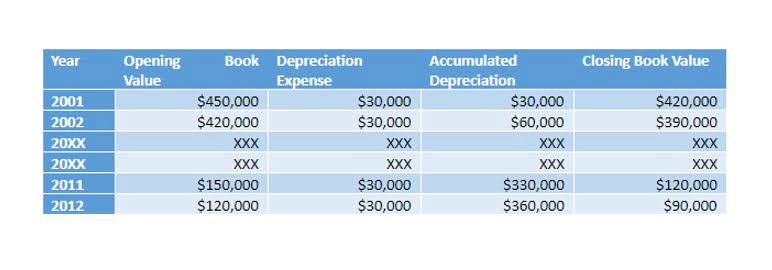
IDP solutions work methodically, following set rules and patterns while also learning from each document they process. This means they can adapt to new invoice formats over time but in a controlled, predictable way. When it comes to invoice processing, businesses need reliable, consistent results. Unlike more general AI tools, IDP platforms are built specifically for tasks like invoice processing, offering a more predictable and accurate approach. They’re designed to handle all sorts of invoices – from simple to complex, typed to handwritten – with high accuracy. This method incorporates artificial intelligence and machine learning into invoice processing workflow.

AI Builder Models
AI Builder prediction models allow you to predict the outcome of bookkeeping an event based on historical data. Learn more about requirements in the Supported languages and files section in Invoice processing prebuilt AI model. By exploring these additional applications, you can unlock the full potential of automation and AI to optimize various aspects of your business operations. This structured workflow ensures that every step is executed efficiently, minimizing errors and delays. Next, we will need to indicate what information, in our case, fields we want the AI Builder model to retrieve.

Automation Software for Large and Midsized Businesses
- To improve accuracy and adaptability, train the AI system with a wide range of past invoice data.
- How does AI invoice processing impact their day-to-day functions?
- It often leads to errors, missed discrepancies, and time wasted on data validation.
- Easily create AI products by yourself without any help from developers.
Easily create AI products by yourself without any help from developers. After that, add a Create Item in SharePoint action and map all the values returned from AI Model to the new item columns. This expression concatenates the text values from the Description field of each row in the prediction results of an image related to invoice, and separates each value with a comma and a space. These benefits make automation a worthwhile investment for businesses of all sizes. Write this expression to create the comma-separated text string of field names.
Actionable analytics and insights

Next, draw/select the fields ai invoice processing on the invoice to map the fields to data in invoice. This language processing model helps you transform unstructured data into structured data that’s machine-readable. You can then apply processing to retrieve information, extract facts, and answer questions. In this article, we will take a look at AI Builder and the different types of models available for various purposes. We will then create a Form processing model that will extract the form data and then save it in a SharePoint List.
Invoice Scanning Process Automation Using Power Automate And AI Builder
This analysis will help determine where AI can deliver the greatest impact. In a nutshell, AI Builder can be a good fit if you’re already using Microsoft tools and want a simple way to automate some of your invoice processing. But if you’re handling a Bookkeeping for Veterinarians large volume of complex invoices from different sources or need more specialized features, you should look into dedicated Intelligent Document Processing (IDP) platforms.

How does AI invoice processing integrate with accounting software like Xero?
- Select Save on the top right, and then select Test to try out your flow.
- AI invoice processing platforms like Nanonets integrate with accounting software like Xero through APIs or connectors, automatically synchronizing extracted invoice data with the corresponding records.
- Extracting data from invoices, validating details, and updating records manually can lead to delays, errors, and inefficiencies.
- Items may not be in the same order or format on every invoice, making manual extraction and categorization time-consuming and error-prone.
- AI also recommends GL codes based on historical data and predefined rules, ensuring consistent cost allocation.
- This reduces errors, speeds up approvals, and ensures every invoice is handled correctly.
- This means they can adapt to new invoice formats over time but in a controlled, predictable way.
AI algorithms within AI Builder models can learn from historical invoice data to automatically assign appropriate general ledger (GL) codes or expense categories to invoices. By analyzing patterns and similarities, AI can classify invoices based on predefined criteria, streamlining the coding process. AI algorithms can be trained to extract relevant information from invoices, such as vendor details, invoice numbers, dates, line items, and amounts.
Key Benefits of Automation
Using optical character recognition (OCR) technology, AI can accurately read and interpret data from scanned or digital invoices. To improve accuracy and adaptability, train the AI system with a wide range of past invoice data. This allows the model to recognize different invoice layouts, detect common errors, and improve field-level extraction accuracy. The more diverse and complete the training data, the smarter and more reliable the AI becomes. Identify inefficiencies, delays, and error-prone tasks that could benefit from automation. Conduct a thorough audit to pinpoint manual bottlenecks and establish a clear baseline for improvement.
- In essence, the role of AI in revolutionizing traditional invoice data capture lies in its ability to augment and amplify human capabilities.
- AI in accounts payable offers several ways to enhance invoice processing, each with its own strengths and considerations.
- Here, the extracted data can be matched against various databases and systems—the vendor name with your approved vendor database and the invoiced amounts against contracts or purchase requisitions.
- It is not free but if your organization paid for premium Power Apps or Power Automate accounts they come with free AI Builder credits.
- It risks errors that can lead to payment issues and financial discrepancies.
- You don’t need to be a coding whiz to set it up, and it plays well with other Microsoft tools you might be using.
Continuous optimization ensures your AI solution remains reliable and aligned with your goals. AI-powered data capture enhances the precision and speed of invoice processing by intelligently extracting key fields such as invoice number, date, line items, and totals. This reduces the need for manual intervention and improves overall workflow efficiency. Machine learning models continuously learn from historical invoice data to improve accuracy and decision-making within processing workflows. These models can identify trends, detect anomalies, and adapt to new invoice formats over time—making them ideal for dynamic, high-volume environments. Finally, AI delivers real-time analytics on invoice processing speed, bottlenecks, exception rates, and approval delays.
- Manual processing is time-consuming and prone to errors, which can lead to delayed payments and issues in cash flow management.
- The transition towards automated, technology-driven processes signifies a strategic move towards a more efficient and adaptive invoicing landscape.
- Traditional invoice processing methods often fall short in the ever-evolving landscape of business operations, where time is money and precision is paramount.
- We’ve been equipping businesses with the capabilities needed to achieve optimized and automated invoice processing for years; we can help your business do the same.
- Once these tools are in place, you can begin building your automated invoicing system, customizing it to suit your business’s specific needs.
- On average, it takes 20+ days to process a single invoice manually, and nearly 1 in 5 contains errors due to manual data entry.
Manual approval processes relied heavily on printed invoices, email threads, or verbal follow-ups—making it difficult to track progress and often resulting in delayed approvals. OCR, another integral component of AI, enables the system to interpret and extract text data from scanned or photographed invoices. This technology goes beyond mere optical recognition, delving into the semantics of the content. As a result, AI-based systems can decipher numerical data and contextual information, such as vendor details, invoice dates, and line items. AI’s impact is most pronounced in its ability to automate and streamline what was once a manual and labor-intensive task.